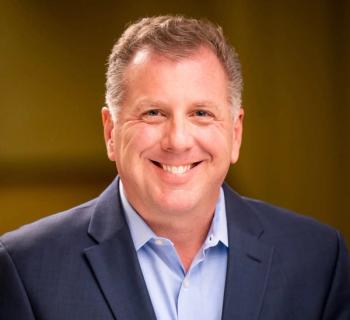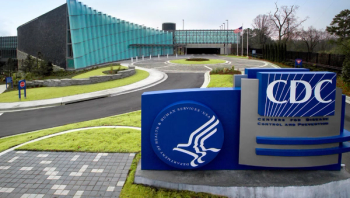
How Providence is making its hospitals more sustainable
The health system has worked to reduce emissions and waste for years. Beth Schenk of Providence talks about those efforts.
Years before sustainability became an emerging priority in the healthcare industry, Providence began working to reduce emissions and waste.
The first “green team” at Providence was formed in 1993. Now, the health system, which operates 51 hospitals and 1,000 clinics in several western states, is pushing for greater sustainability across the entire organization. And Providence has some lofty goals.
Providence is aiming to use renewable electricity throughout the system by 2030. The system has already moved more than 30 facilities to renewable energy. Providence also hopes to divert 50% less waste to landfills by the end of the decade, and has already cut waste headed to landfills by 25%.
Providence is making gains toward sustainability, while also reducing expenses. The efforts are saving the system more than $11 million annually. Beth Schenk, Providence’s chief environmental stewardship officer, says that the system hopes to be saving $100 million annually through its sustainability efforts.
“If we can do everything we have planned, it'll be about $100 million per year,” Schenk says. “And we're a big health system and we have a lot of money but we have very small margins. And so $100 million dollars in savings is significant.”
Schenk seems more passionate about the prospect of improving the environment and the communities the system serves.
“Healthcare is here for health,” Schenk says. “We don't want to be part of the problem. We don't want to be a source of pollution. It just goes against who we are. So I think the healthcare opportunity is significant and promising.”
In an interview with Chief Healthcare Executive®, Schenk discusses Providence’s scorecard to measure progress in sustainability, reducing waste, reusing more goods, and curbing travel.
Growing attention
Hospitals and health systems are facing growing pressure to reduce their emissions, waste and pollutants. The healthcare industry is responsible for
In the beginning of the year, The Joint Commission launched
Many hospitals are just developing programs to reduce their emissions. But Schenk says she’s seen more attention to sustainability among hospitals in the past five years.
Much of Providence’s focus on sustainability stems from its roots as a Catholic system, Schenk says.
“We need to do it right ourselves, but we also need to share with others what we're doing and be part of these national conversations and be part of helping move the world forward,” she says.
Keeping score
Providence has developed what the system calls the “WE ACT” scorecard to evaluate sustainability efforts. The scorecard tracks waste, energy and water, agriculture and food, chemicals and transportation at all of the system’s 51 hospitals.
The scorecard was first developed several years ago with hospitals in Washington and Montana. As the scorecard’s use has expanded, Providence began comparing hospital performance on efforts to reduce waste and use less energy, and the system began to normalize based on size, the number of workers and state regulations.
“This is still a relatively new field in terms of operations in practice and even in the science of sustainability, in healthcare particularly,” she says. “So that was a really important piece that we wanted to be able to compare and contrast. So that's really what led to this recognized need to do that across all of our hospitals.”
The scorecard has been expanded to more than 600 non-acute facilities, and is going to be utilized throughout the entire organization this year.
Providence has used the scorecard to analyze how many gallons of water are used, and how many tons of waste are generated. The system now has data going back to 2019.
“So we can really know at any site what we are paying for our electricity,” she says. “And when it's less efficient, how much could we save by doing ‘X’, so it helps us with decision making. So that's partly about driving efficiencies in the hospitals.”
The scorecard helps track carbon emissions across Providence’s hospitals, which aligns with the Joint Commission’s sustainability program, she says.
“It was an enormous effort to get that built and running and we work on it constantly,” Schenk says. “So that's an ongoing process, but it's already delivering fabulous results for us.”
Providence has employed a strategic waste optimization team (dubbed “SWOT”) to look at efforts to reduce waste across the system. The team analyzes data to look at a solution in Oregon that could be applied in California, Schenk says.
Part of the challenge is that tracking sustainability in healthcare is “a new science,” Schenk says.
“There's not really a national or global database that we could draw from, unlike other aspects of healthcare quality,” she says.
To be sure, Schenk says the sustainability efforts are tied to improving healthcare.
“I see this as a measure of healthcare quality,” Schenk says. “And so our scorecard now is the best resource we have for that.”
Reuse and reduce
Providence has focused on reducing the amount of waste the system generates. In 2022, the system’s hospitals generated more than 90 million pounds of waste, Schenk says.
“It's astonishing how much waste there is,” she says.
Providence asks hospitals to measure “avoided waste,” which is “waste we don’t create in the first place,” Schenk says.
Schenk points to the growing utilization of reusable gowns that can be washed and used up to 75 times. She says that’s better than buying 75 plastic gowns that are tossed in the trash after being used once.
Providence is looking to reduce the amount of single use devices, which is a difficult challenge in healthcare, Schenk admits.
The system is also reprocessing some devices that are repackaged and resold, saving several million dollars a year. “It also keeps waste out of the landfill,” she says.
Schenk touted Providence’s “OneView” program, which was developed in Oregon. The program is designed to help surgeons see some of their own carbon impact with their physician preference cards.
Schenk says the goal is to eliminate the unnecessary opening of items that have to be discarded upon opening. She says it’s a way of managing upstream to reduce the amount of waste that heads to a landfill.
“It's crazy to say see how much brand new stuff we throw away in healthcare,” Schenk says. “That makes no sense. It’s difficult, but we really feel like this is a great solution that we're now expanding across our whole health system.”
“We’ve got to cut down on this unnecessary waste,” she says.
Curbing travel
Providence has also looked to another strategy to reduce emissions: cutting back on travel.
The effort was helped by the pandemic, she says. More meetings are being done virtually, as opposed to flying or driving. Since 2019, Providence has cut business travel by 70%.
“Now we really do a lot of virtual meetings,” Schenk says. “That doesn't mean we don't travel. We do travel.”
But before signing off on a trip, Providence leaders will determine if the trip is necessary. Part of the motivation is to cut expenses, and the reduced travel has saved millions of dollars.
She says the system recognizes that some meetings have to be done in person to build and improve relationships. But Providence wants to avoid travel when it’s not truly necessary.
“People enjoy the extra time of not having to spend time at airports and then in transit … and have more time with family,” Schenk says. “So there's really some wins in doing that. But we still do travel, no question, but we're trying to keep it under control.”
This month, Chief Healthcare Executive® will be presenting stories on sustainability in hospitals, leading up to Earth Day. Feel free to share ideas or success stories. Email: [email protected].








































